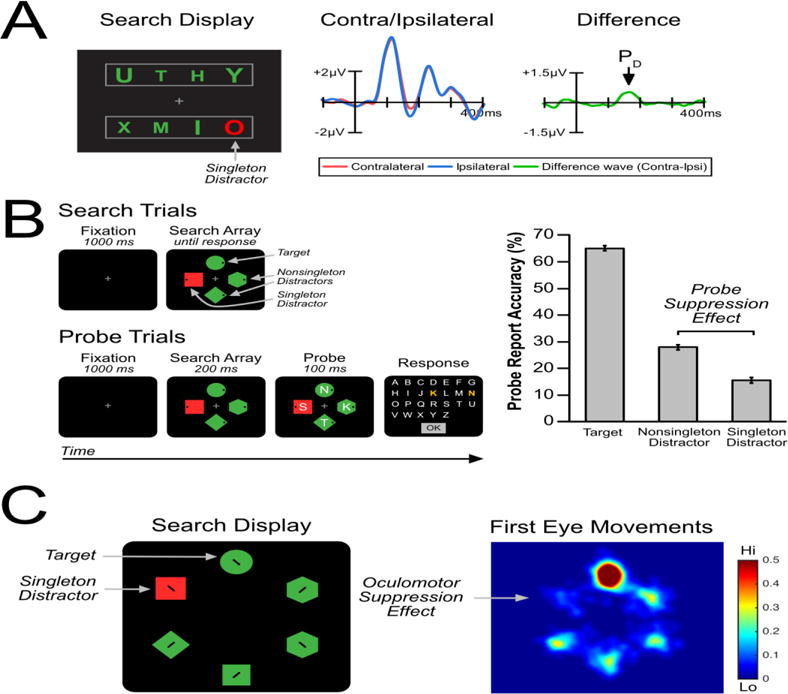Figure 4.

Converging evidence for the suppression of salient-but-irrelevant singletons. (A) In an ERP capture task, participants searched for a specific target (e.g., large green A) and attempted to ignore a salient color singleton (red O). Salient singletons elicited an electrophysiological index of suppression called the PD component [19]. (B) In the capture-probe paradigm, participants search for a green circle and report the location of a dot. On a random subset of probe trials, letters briefly appear in each search location and participant tried to recall as many letters as possible. Probe recall accuracy was impaired at the singleton location compared to other nontarget locations [69]. (C) In an oculomotor capture task, participants searched for a green circle. As shown in the heat map, first eye movements were biased away from the singleton distractor, suggesting that it was inhibited [68].
